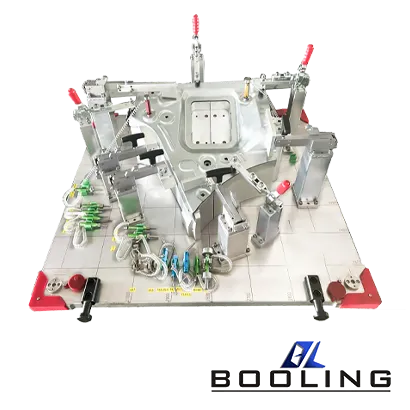Home > Checking Fixture
Checking Fixture Service
A checking fixture in the automotive industry is a precision tool used to inspect and verify the concentricity, runout, and other dimensional standards of components, ensuring they meet the required specifications through various types of inspection and testing methods.
About BOOLING Checking Fixture Service
A checking fixture is a precision-engineered device that holds and secures a workpiece or component in a specific orientation, allowing for accurate and consistent inspection, measurement, and verification. These fixtures are meticulously designed to accommodate the unique geometries and features of the parts being inspected, ensuring a secure and repeatable fit every time.
Common Materials for Checking Fixture Services
The primary function of a checking fixture is to eliminate human error and variability during the inspection process, thereby enhancing the overall quality and consistency of the manufactured products. By providing a stable and controlled environment for inspection, checking fixture enables manufacturers to identify and address any deviations or defects early in the production cycle, minimizing the risk of costly rework or rejected parts.
Checking Fixture Cases
FAQs about Checking Fixture services
How is the check fixture designed?
Checking fixtures are engineered with precision and attention to detail, incorporating various components and design elements to ensure optimal performance and accuracy. The following are some of the key components and design considerations:
- Base Plate: The base plate serves as the foundation of the checking fixture, providing a stable and rigid platform for mounting the workpiece and other components. It is typically made from high-quality materials, such as cast iron or aluminum, to ensure durability and resistance to deformation.
- Locating Elements: Locating elements, such as pins, blocks, or clamps, are strategically positioned to secure the workpiece in the desired orientation. These elements are designed to interface with specific features or surfaces of the part, ensuring precise and repeatable positioning during inspection.
- Clamping Mechanisms: Clamping mechanisms, such as toggle clamps, pneumatic clamps, or hydraulic clamps, are used to securely hold the workpiece in place during the inspection process. These mechanisms are designed to apply consistent and controlled clamping forces, preventing any movement or shifting of the part.
- Inspection Access: Checking fixture is designed to provide unobstructed access to the critical areas of the workpiece that require inspection. This may involve cutouts, openings, or removable sections to accommodate measurement instruments, probes, or visual inspection tools.
- Modular Design: Many checking fixture is designed with a modular approach, allowing for easy reconfiguration or adaptation to accommodate different part geometries or inspection requirements. This modular design enhances flexibility and reduces the need for dedicated fixtures for each part variation.

